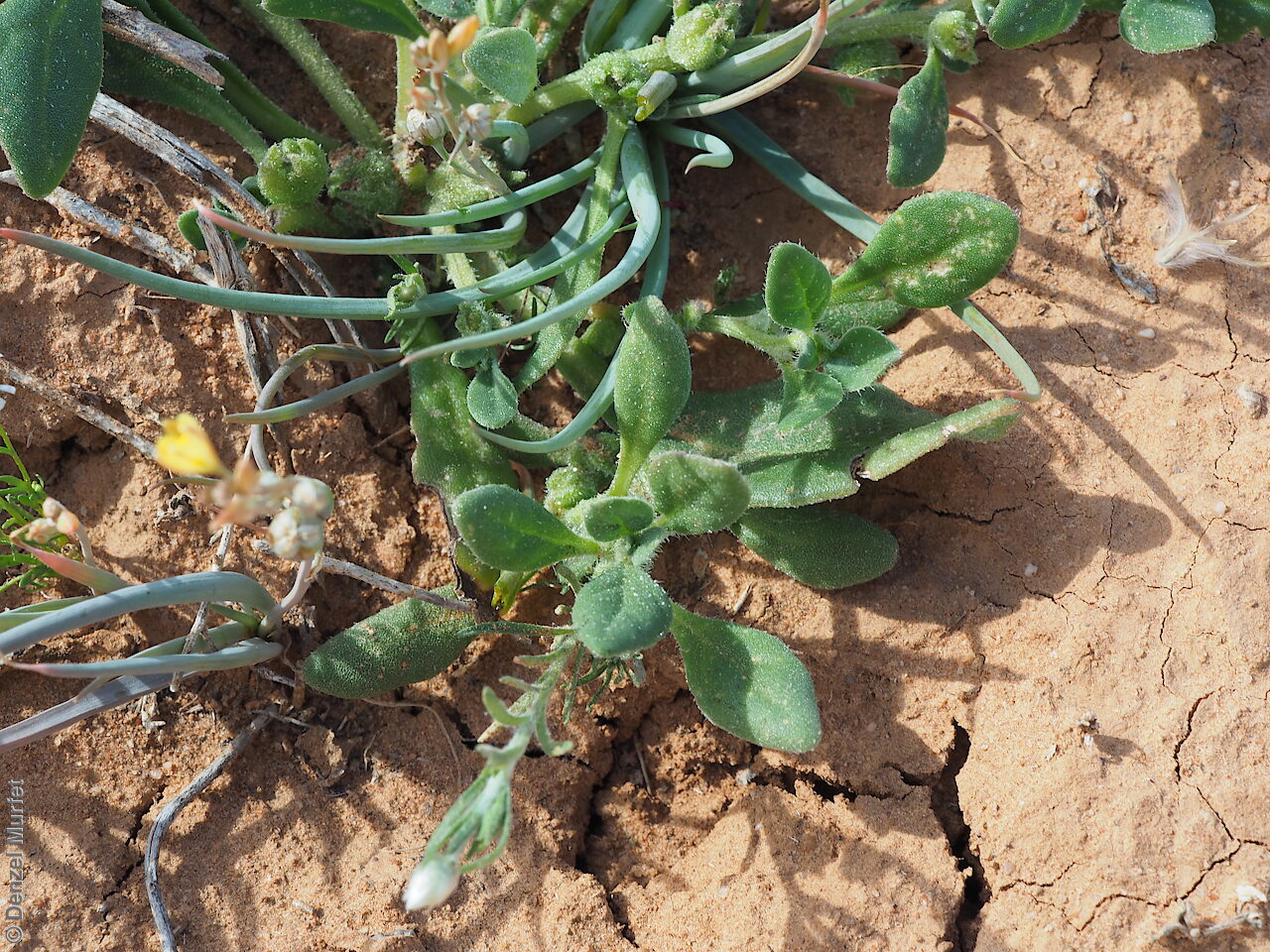
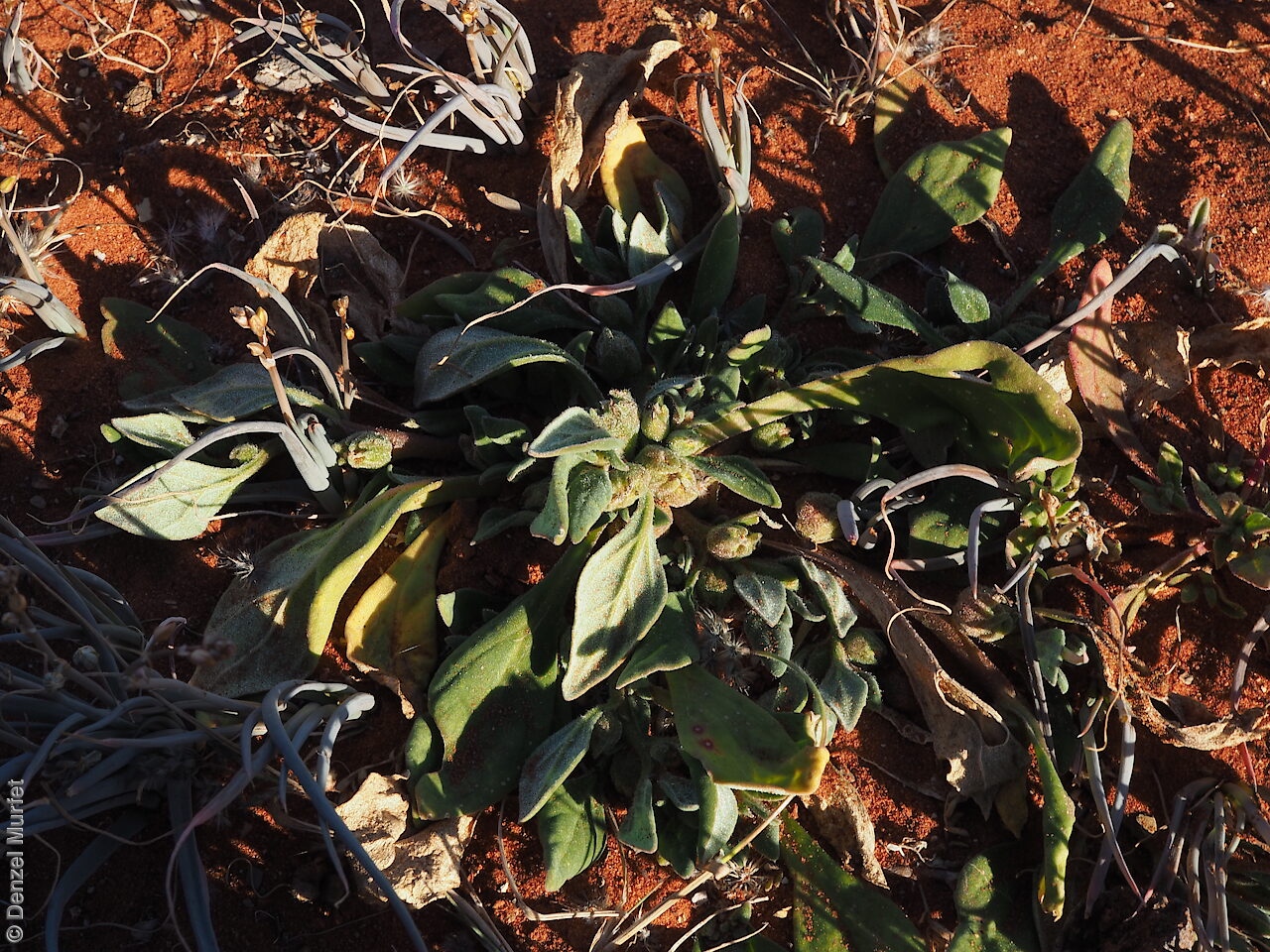
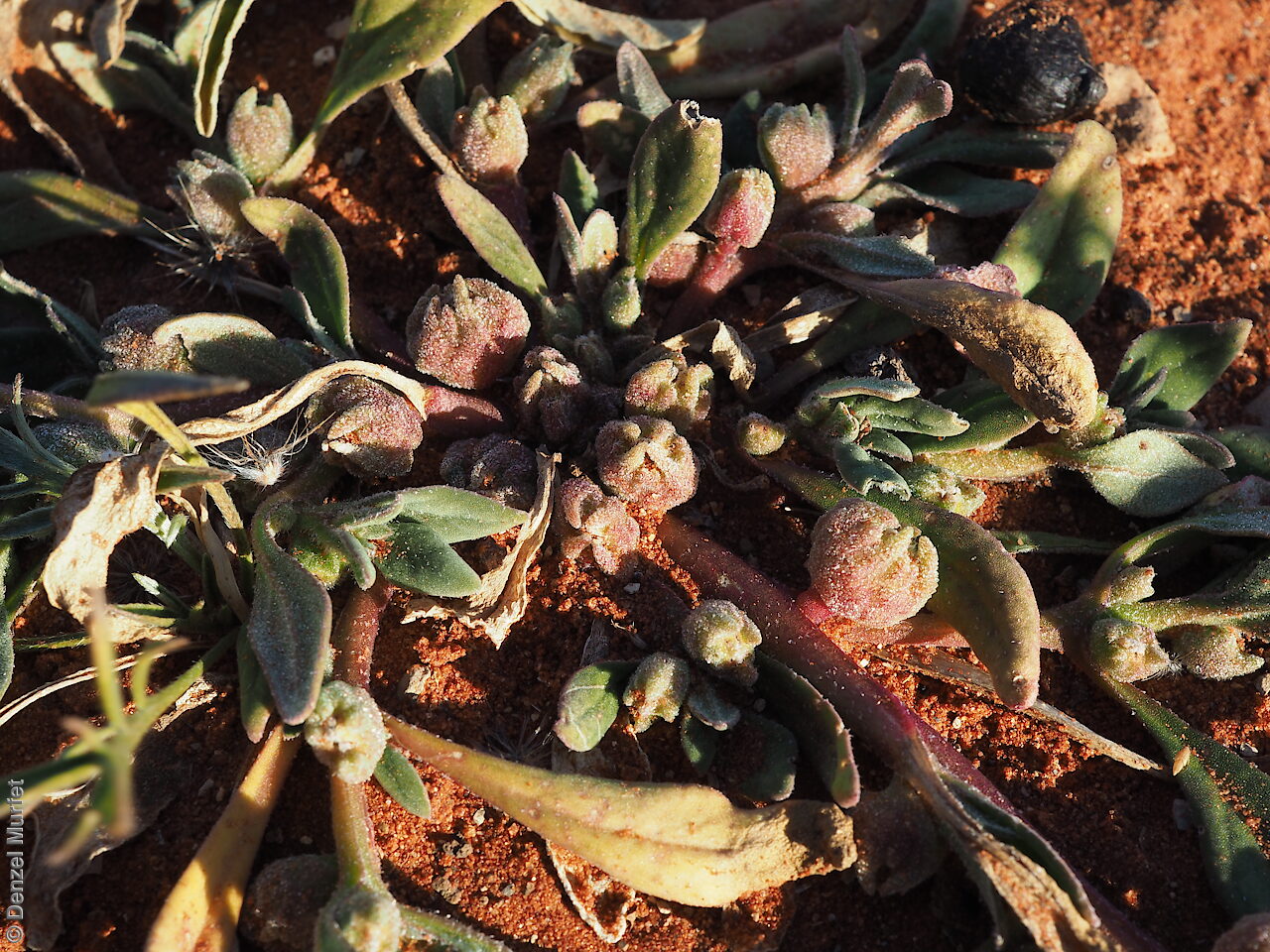
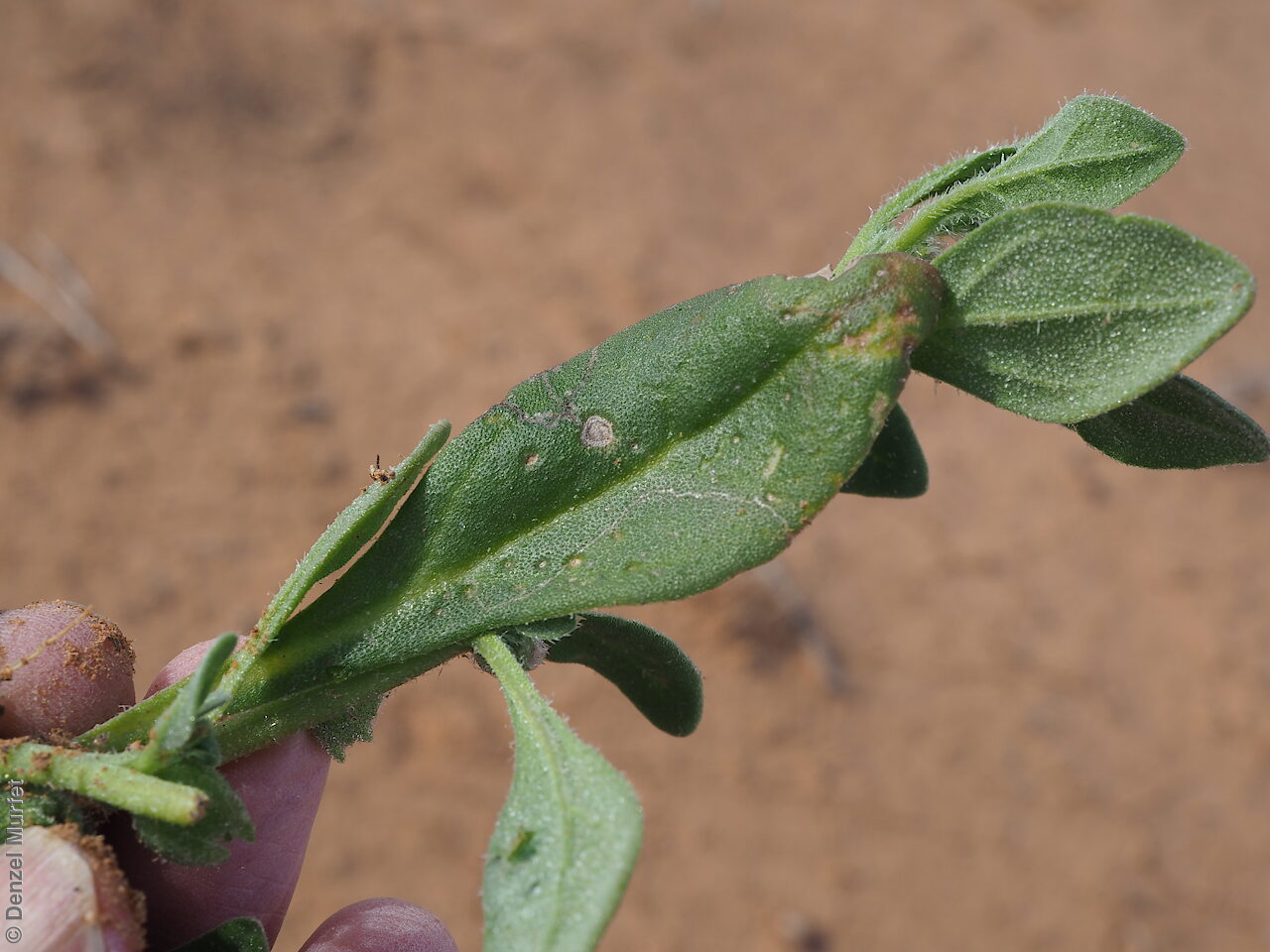
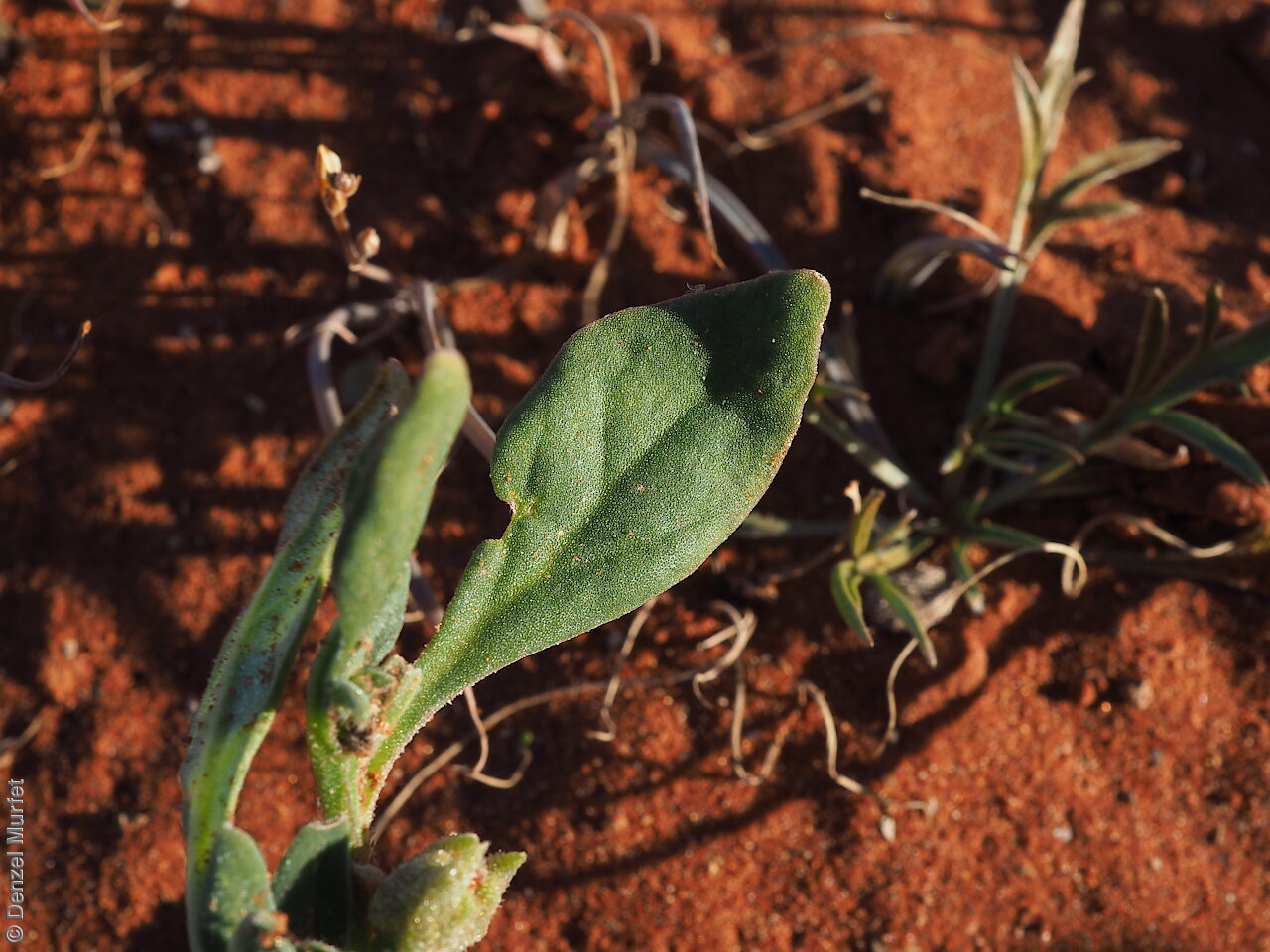
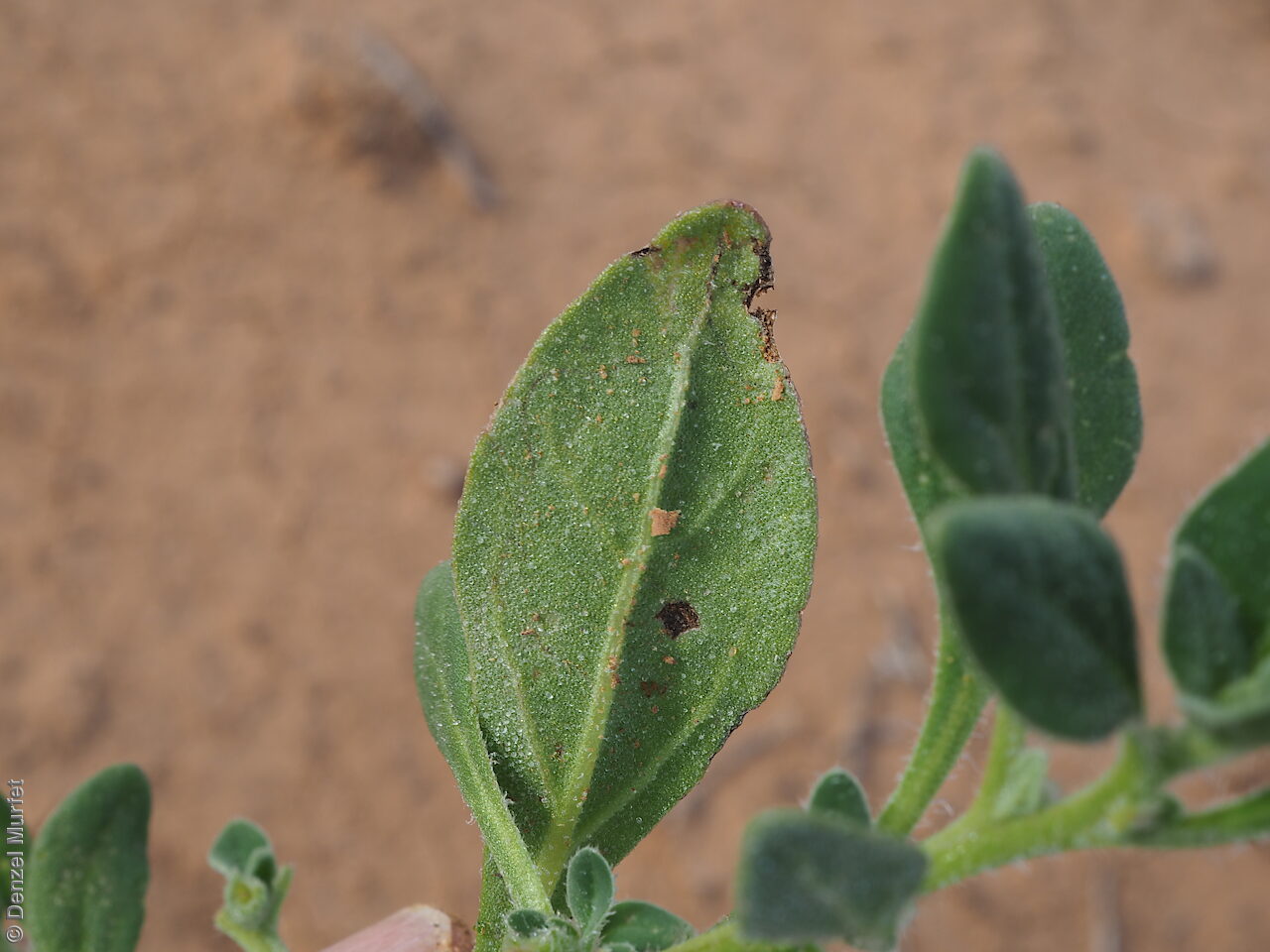
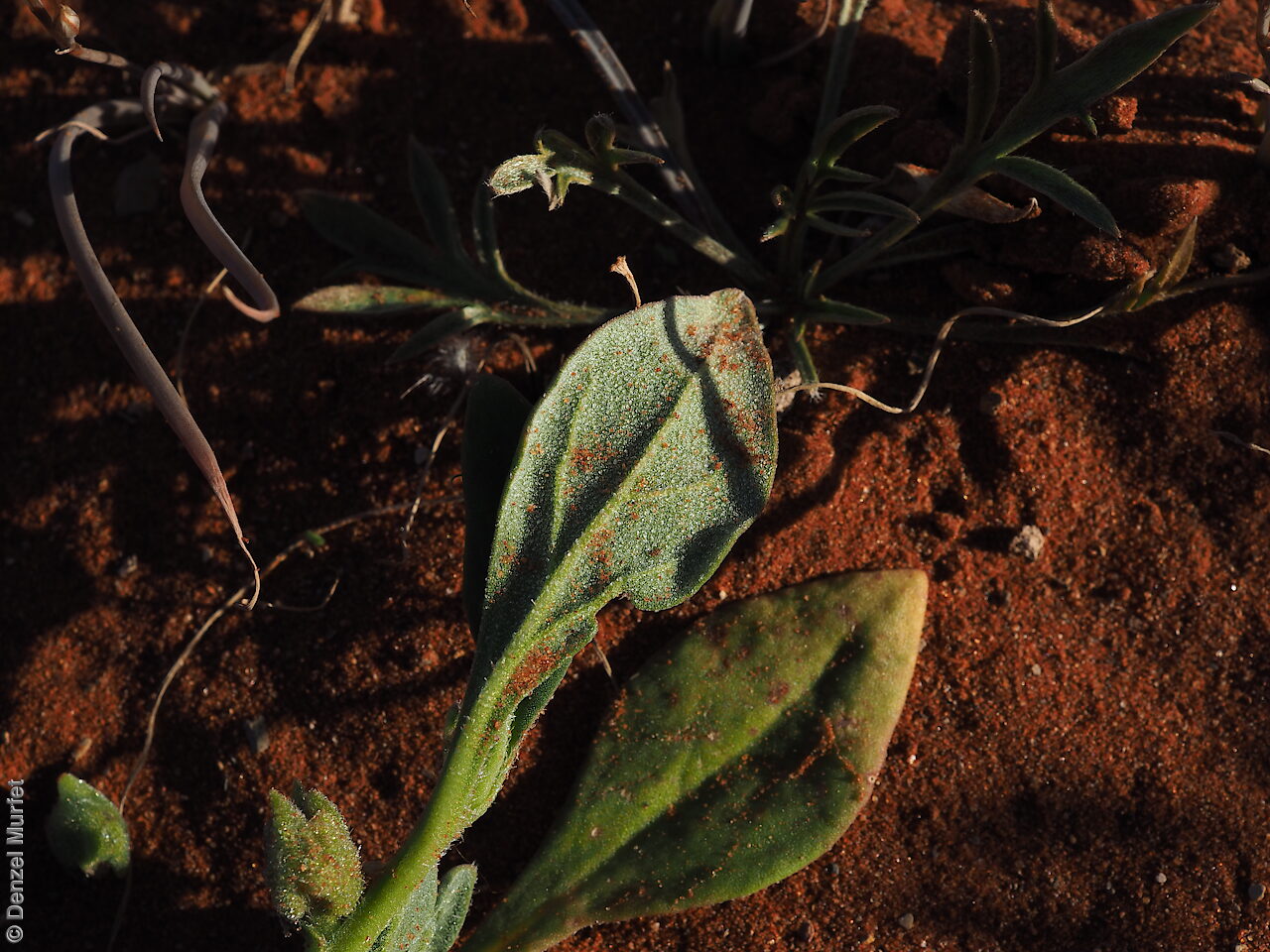
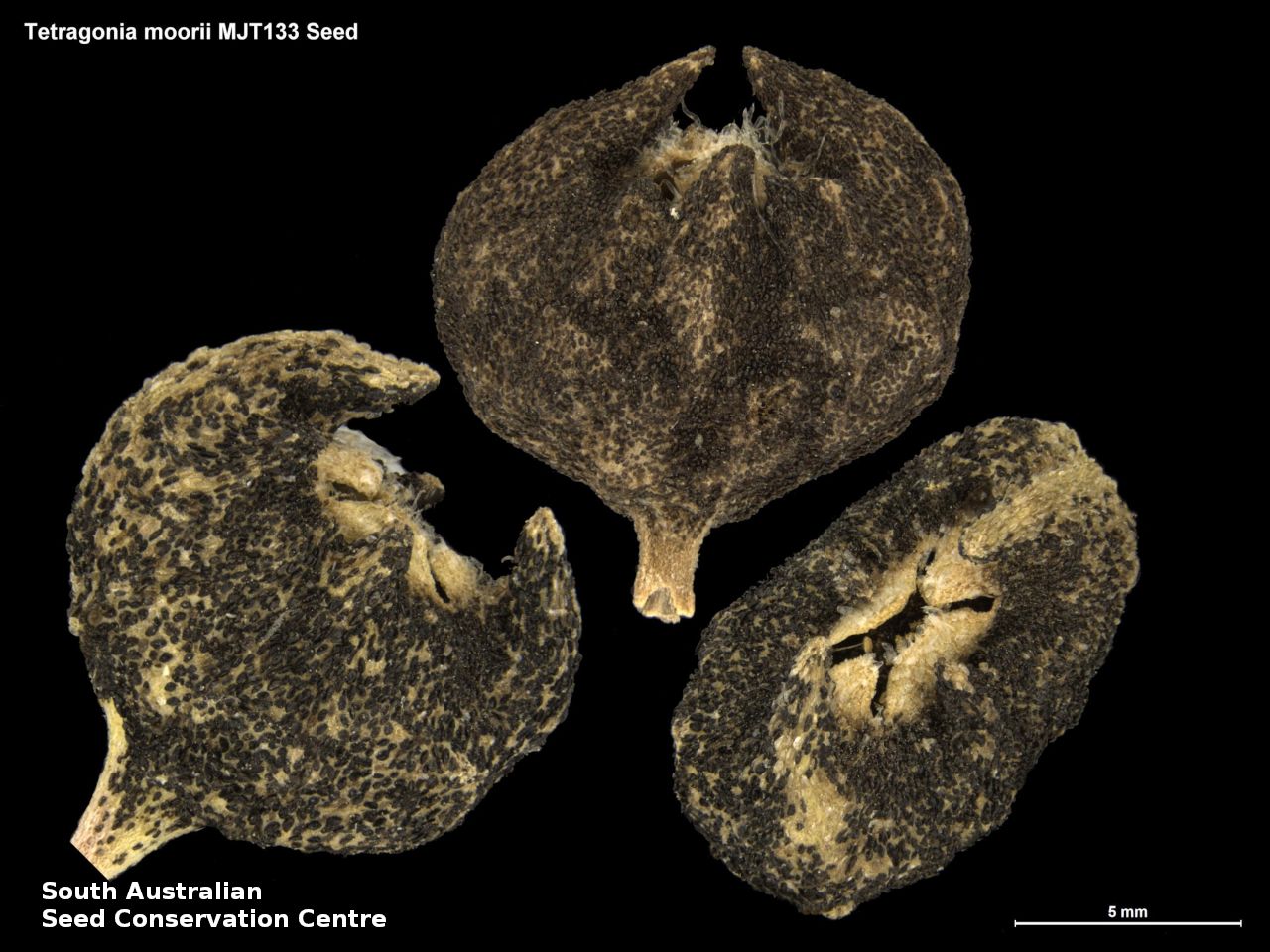
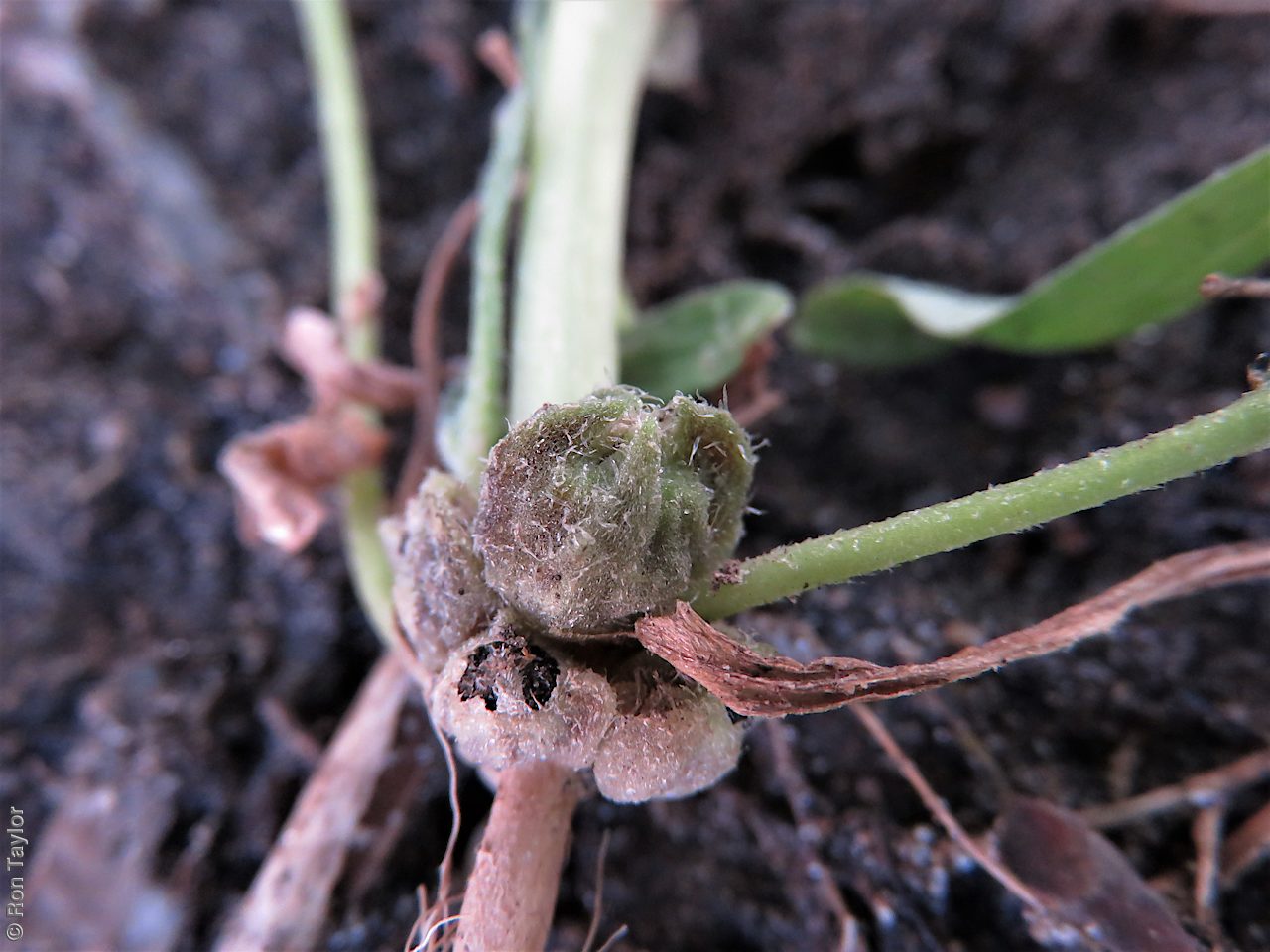
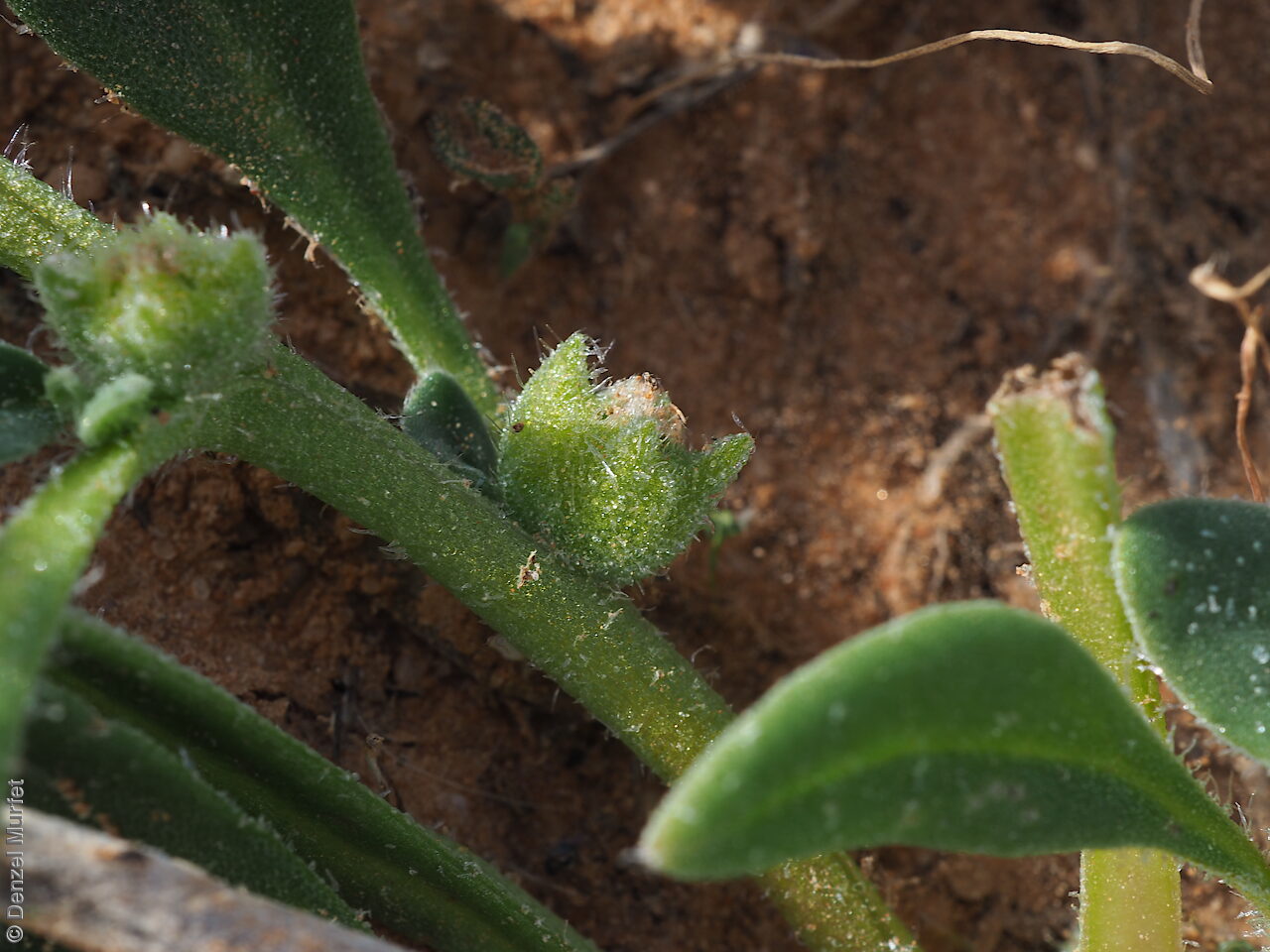



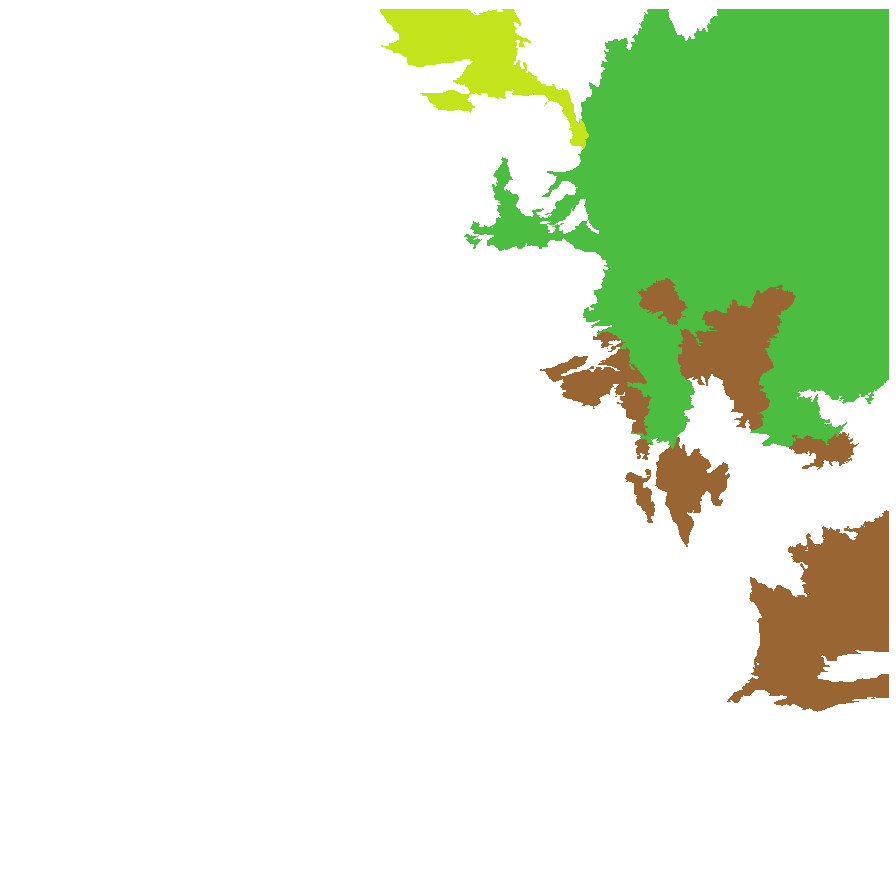
Prior names
Tetragonia tetragonioides, partly
Common names
Warragul Cabbage
New Zealand Spinach
Etymology
Tetragonia from the Greek 'tetra' meaning four and 'gonia' meaning angle; alluding to the 4-angled fruit of some species. Moorei named after C.W.E. Moore who recognised the distinctiveness of this species and whose ecological studies and abundant collections have enriched the Australian National Herbarium.
Distribution and status
Found in the eastern side of South Australia, growing in a variety of habitats, sand dunes and swales, and on both light and heavy-textured soils from red sands to grey cracking clays, particularly in areas subject to periodic inundation. Also found in Western Australia, Queensland, New South Wales and Victoria. Native. Common in South Australia. Uncommon in Victoria. Common in the other states.
Herbarium regions: Lake Eyre, Gairdner-Torrens, Flinders Ranges, Eastern, Eyre Peninsula, Murray
AVH map: SA distribution map (external link)
Plant description
Succulent annual with slender taproot, erect, prostrate or decumbent with young shoots pubescent. Leaves narrow- to broad-ovate, elliptic or rhombic, to 10 cm long and 5 cm wide, petiolate. Flowers yellow-green, solitary in the axils. Flowering between September and November. Fruits are yellow black ovoid woody fruit with 2 claw-like projections. Seed embryo type is peripheral.
Seed collection and propagation
Collect seeds between September and February. Collect fruits that are maturing, turning black. Place the capsules in a tray and leave to dry for at least a week. No further cleaning is required. Store the seeds with a desiccant such as dried silica beads or dry rice, in an air tight container in a cool and dry place. From one collection, the seed viability was high, at 100%. This species has physical dormancy that needs to be overcome for the seed to germinate.
| Location | No. of seeds (weight grams) | Number of plants | Date collected | Collection number Collection location | Date stored | % Viability | Storage temperature |
|---|---|---|---|---|---|---|---|
| BGA MSB | 1,400 (267.92 g) 1,400 (267.92 g) | 100+ | 1-Oct-2007 | MJT133 Lake Eyre | 19-Sep-2008 | 100% | -18°C |
Number of plants: This is the number of plants from which the seeds were collected.
Collection location: The Herbarium of South Australia's region name.
% Viability: Percentage of filled healthy seeds determined by a cut test or x-ray.